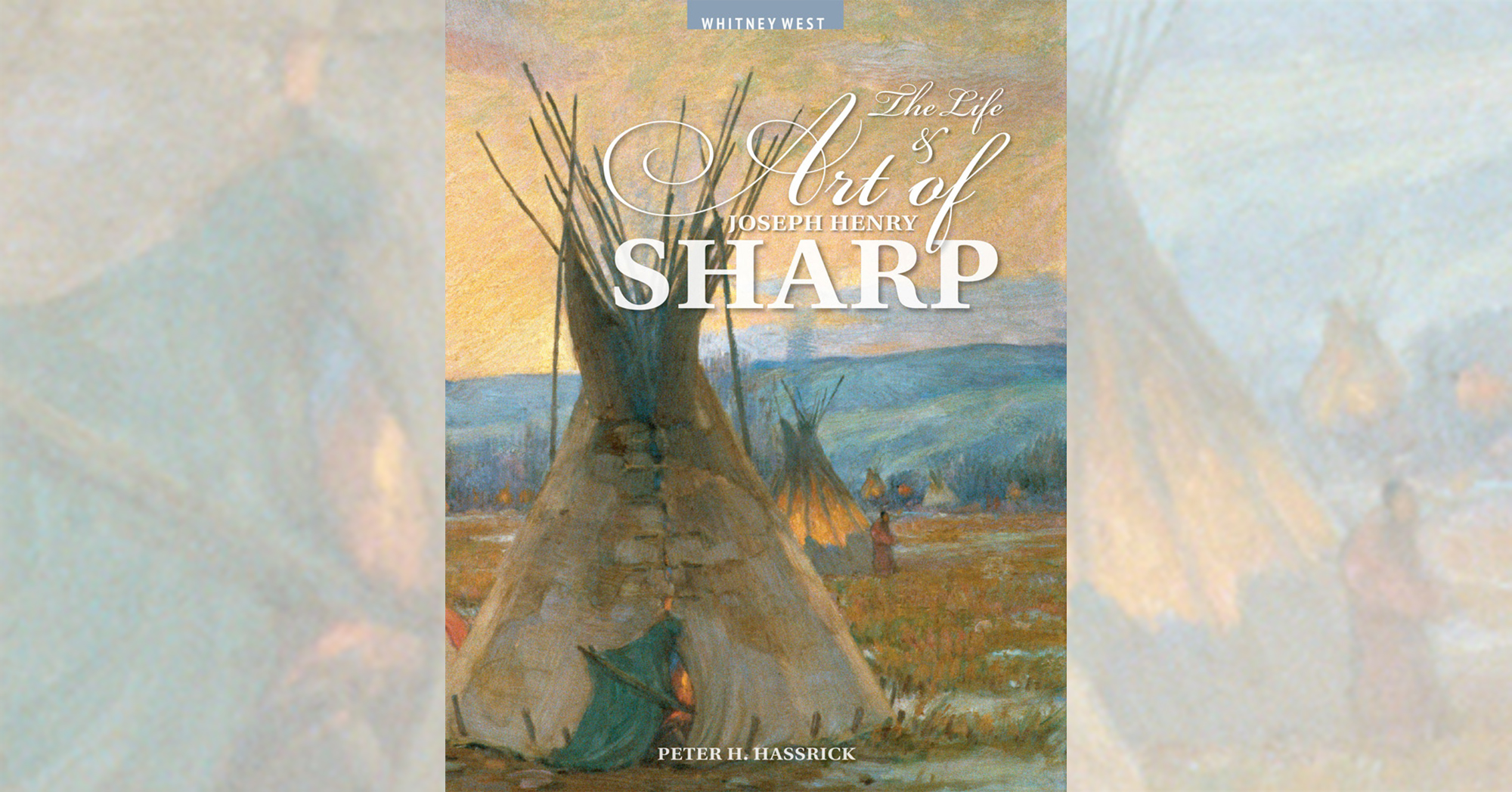The Life and Art of Joseph Henry Sharp, edited by Peter H. Hassrick, University of Oklahoma Press, Norman, 2019, $25
Joseph Henry Sharp (1859–1953) was a founding member of the preeminent Taos Society of Artists. His surname is apt, as “sharp” precisely describes his portraits of American Indians and Western landscapes. He first saw Taos, New Mexico Territory, in 1893 and moved there full-time in 1912. It was his second Western home. In 1905 he’d built a home at the Crow Agency in Montana after President Theodore Roosevelt commissioned him to paint the portraits of 200 Indians who survived the Battle of the Little Bighorn.
“Many of the half-length portraits, designed to emphasize the models’ physiognomy and dress, included on the canvases’ backing detailed biographical anecdotes about the sitters,” writes Marie Watkins, a professor emerita of art history at Furman University in Greenville, S.C. She is one of the contributing authors, along with Sarah E. Boehme, Kelin Michael, Karen B. McWhorter and Peter H. Hassrick. Hassrick, who died in 2019, also edited this attractive book. He was the director emeritus and senior scholar at the Buffalo Bill Center of the West in Cody, Wyo.
Hassrick wrote the section entitled “The Studios of Joseph Henry Sharp.” Sharp’s first Taos studio, in 1909, was a Penitente chapel, and his artistic focus centered largely on Taos subjects. But earlier he had embraced the great outdoors of Montana and Wyoming in all seasons. “The vast northwestern landscape became his studio when he was not focused on portraiture and domestic scenes,” Hassrick writes. “And in winter, when temperatures could freeze the paints on his palette, he was equally enthused with the outdoors. His Montana friend and patron Charles Bair outfitted him with a sheep wagon that was called the ‘Prairie Dog.’ This gave Sharp mobility and shelter as he explored reaches beyond the view afforded by his cozy studio window.”
Accompanying the text by the expert authors is a timeline of Sharp’s long life (he died at 94 in Pasadena, Calif.) and 129 color and black-and-white illustrations. “Fueled by wanderlust and a desire to leave a lasting legacy,” writes McWhorter in the introduction, “Sharp traveled the world, from Munich to Madrid to Montana, from San Francisco to Santa Fe and farther still.…Taos, New Mexico, and Crow Agency became the homes to which the itinerant artist would consistently return.”
—Editor





